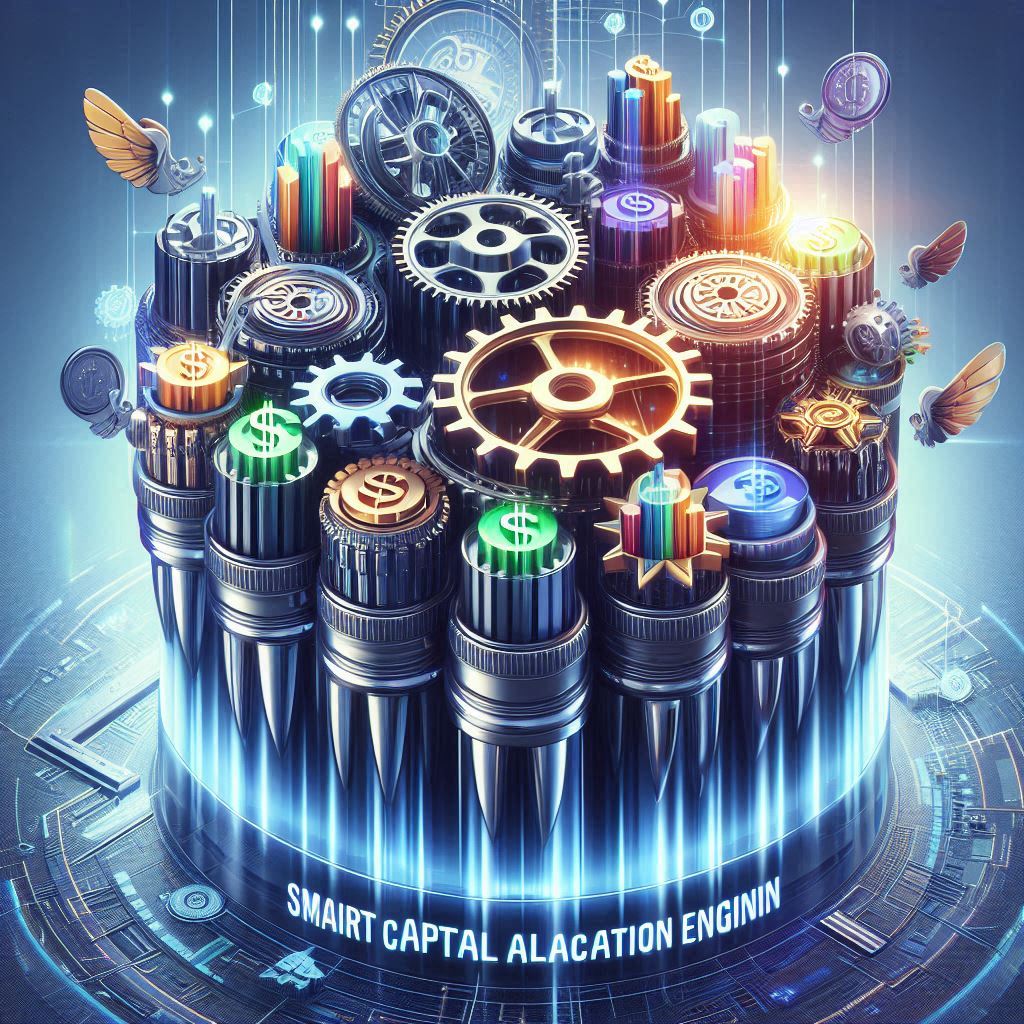Imagine a river, not one that flows along a predetermined path, but one that continuously adjusts its course in response to the landscape, the weather, and the rocks beneath. This river moves where the flow is strongest, carving new paths, ensuring that it nourishes the land that needs it most. This is the essence of Smart Capital Allocation Engines — flexible, adaptive systems that direct capital not rigidly, but dynamically, towards traders and strategies that demonstrate statistical edge, scalability, and emotional consistency.

In the world of future prop firms, these engines will be the driving force behind smart capital deployment, guiding funds to the most promising traders and trading strategies based on performance metrics that go beyond pure profit.
1. The River of Capital: Flowing Where It’s Needed Most
- Traditional capital allocation models are like rivers that flow along the same old channels, restricted by age-old rules and algorithms, regardless of changes in the terrain.
- Smart Capital Allocation Engines act like rivers that naturally shift their course, flowing toward the areas where the current is strongest — traders who demonstrate consistent performance, emotional stability, and the ability to scale.
- Just as water seeks the most fertile land, capital will find the traders with the most statistically significant edge, adapting to their evolving performance and emotional balance.
- Future prop firms will use these engines to ensure that funds are always allocated where they can generate the greatest return, enhancing both profitability and stability.

2. The Garden: Planting Capital Where Growth is Most Promising
- Traditional capital allocation models are like gardeners who plant seeds in soil that may not be fertile, hoping for growth but often ignoring the underlying conditions.
- Smart Capital Allocation Engines are like gardeners who understand the soil, planting seeds where they know growth will be most robust.
- These engines assess not only historical performance but also emotional consistency and scalability — ensuring that funds are planted in fertile ground where they can produce long-term returns.
- For future prop firms, this approach will guarantee that capital is directed towards traders who can cultivate success, even in challenging market conditions.
3. The Bridge: Connecting Resources and Opportunity
- Traditional capital allocation systems are like bridges with rigid, fixed pathways, leading from one side to the other without considering the changing landscape.
- Smart Capital Allocation Engines are like bridges that adapt to changing conditions. They continuously monitor the trader’s performance, adjusting resource allocation in real-time, ensuring that funds are always deployed where the trader is most likely to succeed.
- Whether a trader is showing new patterns of success, shifting their strategy, or adjusting their emotional mindset, these engines track and respond to these changes, ensuring capital is always flowing toward optimal opportunities.
- Future prop firms will build on this adaptive flexibility, ensuring their funding models are more responsive and efficient than ever before.
4. Objection: “Doesn’t this fluidity risk overcomplicating capital allocation? Couldn’t it result in too much uncertainty?”
- Critics may argue that flexible allocation could lead to unpredictable, erratic capital flow, complicating long-term strategy.
- Rebuttal: While Smart Capital Allocation Engines adjust capital flow based on performance, they do so using advanced predictive models and machine learning techniques that are grounded in data.
- These systems do not operate randomly; they are based on clear, quantifiable metrics that track a trader’s statistical edge, scalability, and emotional stability, ensuring that the flow of capital is always rooted in performance.
- Future prop firms will ensure that these engines are highly accurate, filtering out the noise and allocating resources to traders who demonstrate true potential, not temporary success.
5. Objection: “Can we truly assess emotional consistency in real-time? What if it’s misinterpreted?”
- Some may question whether it’s feasible to measure emotional consistency with precision and whether misinterpretation could lead to poor capital allocation decisions.
- Rebuttal:Smart Capital Allocation Engines incorporate real-time psychological data, such as biometric feedback and neuroadaptive algorithms, to assess emotional consistency.
- These systems do not rely on subjective emotional cues but instead use objective data — such as heart rate variability, cognitive load, and even facial expressions — to build an accurate emotional profile.
- Over time, the system learns and refines these assessments, ensuring that emotional states are accurately detected and capital is only allocated to traders who demonstrate emotional stability, even during times of market stress.
- Future prop firms will leverage these engines to ensure that traders are not only skilled but also resilient, maintaining their emotional balance during turbulent periods.
6. The Compass: Adjusting the Path Based on Real-Time Data
- Traditional capital allocation systems are like a compass that always points in the same direction, irrespective of changes in the environment or the needs of the traveler.
- Smart Capital Allocation Engines are like compasses that constantly adjust, recalibrating based on the trader’s evolving performance.
- These engines track multiple dimensions of trader behavior — from market expertise to emotional fortitude — and ensure that capital allocation remains aligned with the trader’s strengths, scalability, and consistency.
- As future prop firms rely more heavily on such systems, they will ensure that traders are given the right amount of funding at the right time, leading to more strategic, effective growth.
7. The Telescope: A Long-Term View with Real-Time Adjustments
- Traditional allocation models are like looking through a telescope that focuses only on short-term trends, ignoring the broader view.
- Smart Capital Allocation Engines function like telescopes with a dual focus: they monitor both the short-term performance and the long-term trajectory of a trader.
- By continuously analyzing real-time data — including psychological state, market behavior, and scalability potential — these engines direct capital where it is most likely to yield sustainable growth.
- Future prop firms will utilize this long-term vision with real-time adaptability, ensuring that capital is allocated for maximum impact over the trader’s entire career, not just in one trading cycle.
8. The Safety Net: Preventing Unnecessary Risk
- Traditional capital allocation systems provide a safety net but often fail to predict when the trader is about to enter risky territory.
- Smart Capital Allocation Engines are like safety nets that not only catch the fall but predict and adjust capital flow based on early signs of risk.
- If a trader shows signs of emotional instability, the engine will lower exposure and reallocate funds, ensuring that no major risks are taken without adequate preparation.
- For future prop firms, these systems will help manage risk more effectively, ensuring that capital is always used optimally without exposing traders to unnecessary dangers.
Smart Capital Allocation Engines will revolutionize how future prop firms deploy funds by adapting to the performance, scalability, and emotional consistency of traders. These systems will not rigidly allocate capital but will intelligently direct resources where they are most likely to generate sustainable growth, offering real-time adjustments based on market dynamics and trader psychology.
With their flexibility, precision, and data-driven adaptability, these engines will ensure that future prop firms can maximize returns while safeguarding traders’ long-term success and emotional well-being.




